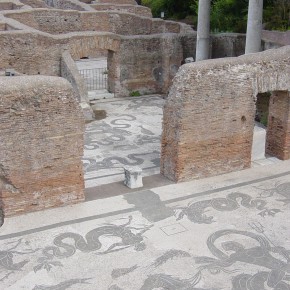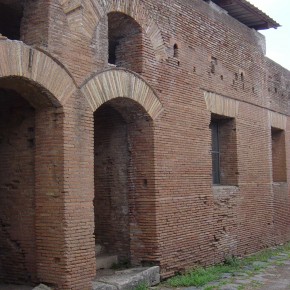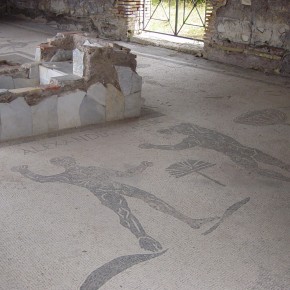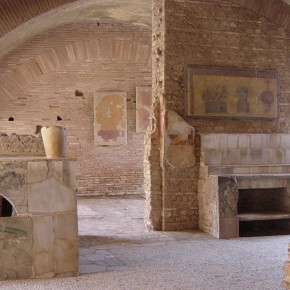POMPEII’S DISTANT COUSIN – OSTIA ANTICA
There can be few people anywhere in the world who have not heard of Pompeii and its near neighbor Herculaneum – the two towns on the Bay of Naples which were destroyed so spectacularly in AD 79 by the eruption of nearby Mount Vesuvius. These two towns, now painstakingly excavated and preserved, are today, amongst the most visited sites in the whole of Italy.
But Pompeii and Herculaneum also have a distant cousin. Less well-known, but no less impressive, is the ancient Roman town of Ostia Antica, situated about 16 miles (25 km) south-west of Rome.
Ostia is generally believed to date from the second half of the 4th century BC, and was originally built as a military post to control and defend the mouth of the River Tiber. It takes its name from the Latin ostium, meaning, “river-mouth”. In its heyday, Ostia was the principal port for the city of Rome and a thriving commercial centre, with a population of around 100,000 people. Its decline began in the second century AD, when much of the commercial traffic was redirected to the newly-built harbor at nearby Portus. By the 4th century AD the harbor at Ostia was beginning to silt up, and an epidemic of malaria eventually caused the town to be abandoned.
Ostia might be less spectacular than Pompeii or Herculaneum because it died a gradual, rather than a sudden death, but it gives visitors a much more complete picture of life in a Roman town. Streets, forum, capitol, theatre, bathhouses (many still with their original spectacular mosaics), temples, market, shops, offices, workshops, warehouses, grain stores and private residences – they are all here, and all remarkably well-preserved.
Ostia was home to all social classes. The wealthy enjoyed the sumptuous comforts of spacious, detached houses (domūs), whilst the working-class people lived in the three- or four-story apartment blocks (insulae) which varied considerably in their levels of comfort and decoration. One of the smarter ones is the House of Diana, which boasts a private bathhouse and a central courtyard. The bar on the ground floor, still houses the marble counter where the customers bought drinks and hot food.
The cosmopolitan nature of the town is reflected in the diversity of its places of worship. In addition to Roman temples, there are also a number of temples dedicated to the Persian god Mithras, as well as a first-century Jewish synagogue and a Christian basilica.
The site museum is home to the many exhibits which have emerged during the excavations of the town. Sculptures, statues, pottery, jars, amphorae, glass or alabaster bottles – all offer great insight into the everyday lives of Ostia’s inhabitants. A more recent addition to the site is a modern visitor-center, which also houses an excellent café.
Ostia is easy to reach from the center of Rome – the journey takes about half an hour by suburban train. The modest admission charge to the excavated site (scavi) is an absolute bargain. Allow at least half a day for your visit, but you may well find the place so fascinating that you’ll want to stay a lot longer!
Sue Barnard, 2013





Pingback: Synchronized Chaos » Blog Archive » Synchronized Chaos November 2013 – Mapping the Inner and Outer Cosmos